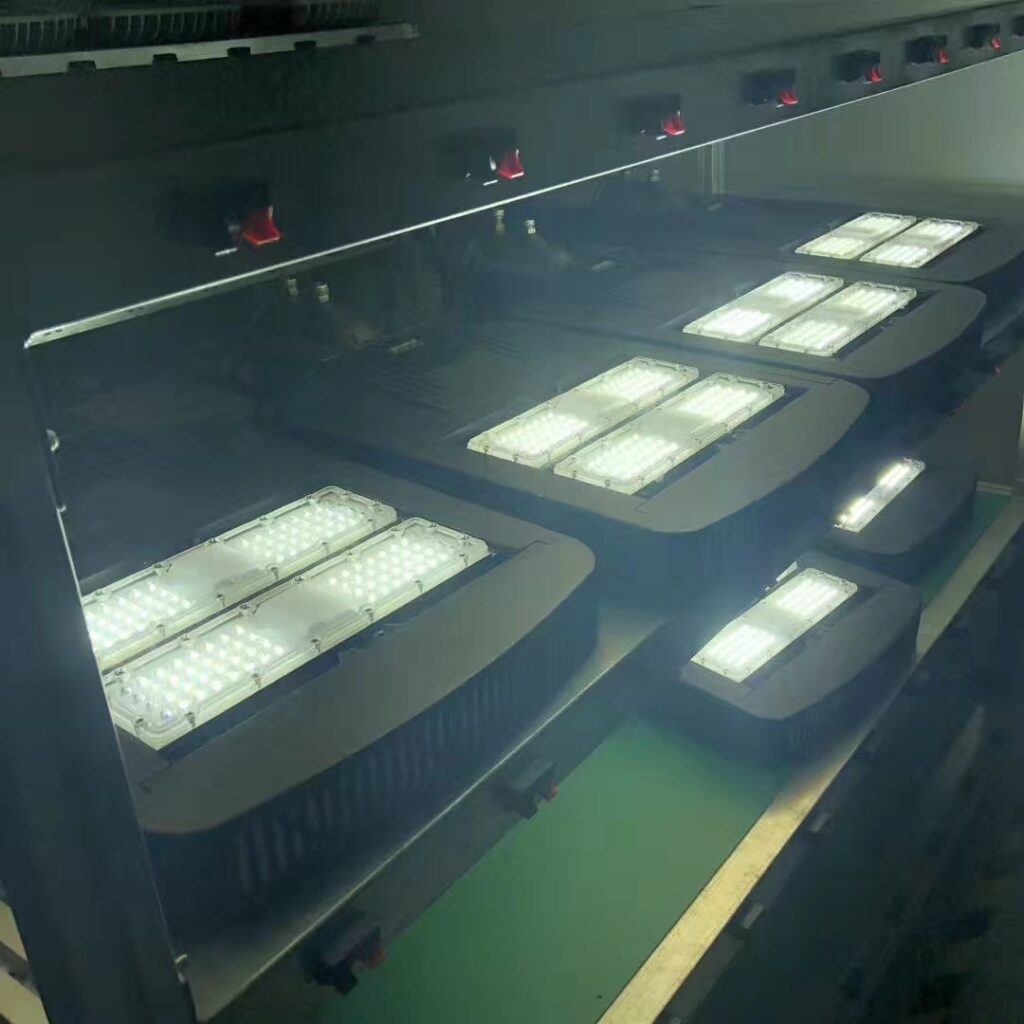When LED street light shipped before shipment, we will carry out various inspections on the whole lamp. First, the finished LED lamps must be aged, high and low voltage test, light test, waterproof test and other tests before they pass the test before they can be delivered to customers. Lamps for outdoor lighting (LED street lights, LED flood lights, LED high bay lights), home lighting (simple lights, ceiling lights, panel lights, etc.) or lighting in special places (medical lights, ship lights, etc.) must be strictly controlled, then Below we focus on the luminous performance and efficiency testing instructions of LED lamps:
1. Optical characteristic detection
The detection of spectral characteristics of LEDs includes spectral power distribution, color coordinates, color temperature, and color rendering index.
The spectral power distribution indicates that the light of the light source is composed of color radiation of many different wavelengths, and the radiation power of each wavelength is also different. The light source was measured by comparison with a spectrophotometer (monochromator) and a standard lamp.
Color coordinates are quantities that numerically represent the color of light emitted by a light source on a coordinate graph. There are various coordinate systems for coordinate graphs representing colors, usually X and Y coordinate systems are used.
Color temperature is a quantity representing the color appearance (appearance color representation) of a light source seen by the human eye. When the light emitted by the light source is the same color as the light emitted by an absolute black body at a certain temperature, that temperature is the color temperature. In the field of lighting, color temperature is an important parameter to describe the optical properties of light sources. The related theory of color temperature is derived from black body radiation, which can be obtained from the color coordinates of the black body locus, which is contained in the color coordinates of the light source.
The color rendering index indicates the amount of light emitted by the light source that correctly reflects the color of the illuminated object. It is usually expressed by the general color rendering index Ra, which is the arithmetic mean of the color rendering index of the light source to 8 color samples. The color rendering index is an important parameter of the quality of the light source, which determines the application range of the light source. Improving the color rendering index of white LEDs is one of the important tasks of LED research and development.

Tested by high-and low-voltage lighting
2. Luminous flux and luminous efficacy detection
Luminous flux is the sum of the amount of light emitted by the light source, that is, the amount of light emitted. The detection methods mainly include the following two:
(1) Integral method. Light the standard lamp and the lamp under test in turn in the integrating sphere, and record their readings in the photoelectric converter as Es and ED, respectively. The standard luminous flux is known s, then the luminous flux of the lamp under test is D=ED×Qs/Es. The integration method utilizes the principle of “point light source” and is easy to operate, but is affected by the color temperature deviation between the standard lamp and the lamp under test, and the measurement error is large.
(2) Spectroscopy. The luminous flux is calculated from the spectral energy P(N) distribution. Using a monochromator, measure the 380nm – 780nm spectrum of the standard lamp in the integrating sphere, then measure the spectrum of the lamp under test under the same conditions, and compare and calculate the luminous flux of the lamp under test.
The luminous efficiency is the ratio of the luminous flux emitted by the light source to the power consumed, and the luminous efficiency of the LED is usually measured by a constant current method.
3. Luminescence intensity detection
Light intensity is the intensity of light, which refers to the amount of light emitted at a certain angle. Because the light of the LED is concentrated, the inverse square law does not apply at close distances. The CIE127 standard stipulates two measurement averaging methods for the measurement of light intensity: measurement condition A (far field condition) and measurement condition B (near field condition). For the condition of light intensity, the detector area for both conditions is 1 cm2. Typically, standard condition B is used to measure luminous intensity.
4. Light intensity distribution test
The relationship between light intensity and spatial angle (direction) is called false light intensity distribution, and the closed curve formed by this distribution is called light intensity distribution curve. Because there are many measuring points, and each point is processed by data, an automatic goniophotometer is usually used for measurement.



